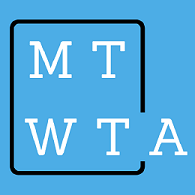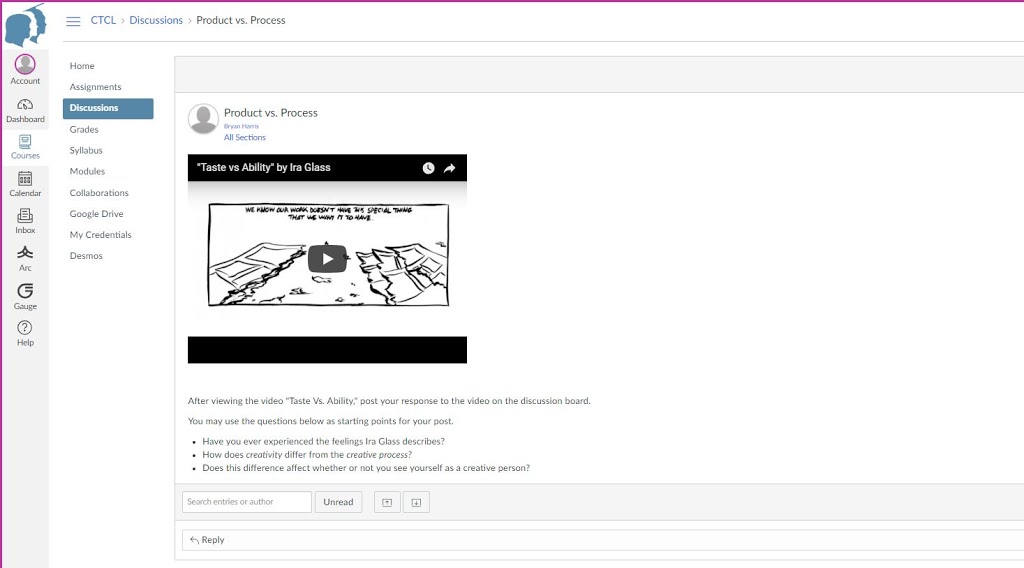As I conclude my coursework in EDLD 5318 and finish creating my first fully-online course, I’ve been tasked with some reflection on the course development process and how it relates both to my learning philosophy and the concepts of online learning and quality teaching in general.
What Instructional Design theories lend themselves to development of online learning courses? Which one did you lean toward in developing your course?
Using Bates’ (2015) delineation and explanations of 5 instructional theories, one could make an argument that there are elements of all of them to be found in online learning courses. Online learning can make excellent use of the objectivist idea that there exists a definable body of knowledge that has been or can be discovered; the internet is an ideal medium for storing, accessing, and exploring that knowledge. Many online learning tools have also taken up the behaviorist notion of stimulus and response, in the form of online exercises and drills; math problems and aural skills training for music students are but two examples of this.
The real potential for online learning, however, lies beyond the relatively easily defined realms of objectivism and behaviorism and more in its relation to cognitivism, constructivism, and connectivism. The latter two especially seem tailor-made for the learner-driven, socially-dependent nature of the online learning environment. The analytical, self-aware nature of cognitivism–learning how to learn–is a natural offshoot of the deeper learning that constructivism and connectivism encourage. Indeed, the heart of constructivism, as put forth by Bruner (1961), is the acquisition of knowledge through solving real-world challenges, and relating that knowledge to existing knowledge, “constructing” new understanding by building off of the old. This, coupled with the connectivist emphasis on creating knowledge by “connecting” sources of information, seem to be what online learning environments are made for.
The course I have developed leans heavily toward constructivism, at least in the learning activities themselves. Learners acquire new knowledge (the use of audio production software to create original, personally significant music, and the growth mindset-dependent process of revising those works based on others’ feedback) and relate it to existing knowledge and experience (their own classrooms and students, most of which are not music-related and indeed may not even be in subject areas traditionally considered “creative”). It could be argued that the ultimate learning outcome of the course–helping teachers develop a growth mindset in themselves and in their students–is firmly based in cognitivism.
How did you implement the UbD plan for your learning environment in creating learning opportunities for students?
All of the learning activities in the professional learning plan I have designed are aimed at a single goal: helping teachers develop a growth mindset in themselves and in their students. While the PL program as a whole, and this course in particular, begin with an emphasis on the use of audio production tools, these are just that: tools. The tools that learners gain experience with are designed not to turn them into renowned composers or music producers, but to aid them in tapping into their own personal creative expression, and, through that, the process of taking something as intensely personal as a creative work and shaping it into something better aided by the feedback of others. The learning activities are designed to meet learners at whatever comfort level they may feel with musical creation and help them progress to the point where they are comfortable with revising and strengthening those creations. It is this process that learners, during the latter part of this course and this program, work toward bringing into their own learning environments, regardless of what academic area that may involve. The essential plan is to help learners apply what they have learned in one specialized area to other areas that are particularly relevant to their circumstances.
The UbD model put forth by McTighe and Wiggins (2005) has been particularly useful in developing this online course. Many of the audio production activities have been adapted from another course I teach at the high school level, Technology-Assisted Music. While some of the ultimate learning outcomes of that course align with this one (using audio production as a creative tool, developing growth mindset thinking, etc.), the course pays more attention to the technical skills and concepts involved in music technology. The UbD model was particularly helpful in ensuring that the focus of the activities in this online course was more aligned with the professional learning goals than with technical proficiency.
With regard to what you have learned in this course, discuss the relevance and importance of providing online learning for our students.
and
What is the enduring understanding you can take from this course and apply in your teaching?
Providing online learning opportunities for our students is an important responsibility for both practical and philosophical reasons. From a practical standpoint, online learning offers a greater chance at addressing a vital but often elusive element of quality education: equality of access. Whether a student’s learning challenges stem from their socio-economic situation, difficulty with information processing, physical impediments to school attendance, or any one of an array of other possible factors, the unfortunate fact remains that our current educational system is geared more toward providing a mass-produced education to what Meyer, Rose, and Gordon (2014) call the “mythical average student” (p. 2), rather than toward ensuring every student has the chance to learn and grow to the best of their ability. While online learning is not a cure-all for these problems of educational inequality, the opportunities that it provides for tailoring education to each student’s needs, abilities, and desires, and to address systemic inequity, mean that it is our responsibility to do all that we can to provide it in every possible way.
This relates to the philosophical motivation for providing online learning, and the overarching lesson I am taking out of this course and back into my own classroom (online and otherwise). Much as the course I have designed uses the study of digital audio production as a tool for developing learners’ growth mindsets, online learning is not a goal in and of itself, but a way to shape how we as educators think about effective teaching. Chickering and Gamson (cited in Bates 2015), outline seven elements of such teaching, stating that good practice in undergraduate education:
- Encourages contact between students and faculty.
- Develops reciprocity and cooperation among students.
- Encourages active learning.
- Gives prompt feedback.
- Emphasizes time on task.
- Communicates high expectations.
- Respects diverse talents and ways of learning.
Recognizing that principles of good undergraduate education are likely to be applicable at all levels, these seven elements (with the possible exception of #5 and #6, which may skew more toward the mass-production educational model than is desirable) are epitomized by online learning. The social connectivity of online education and the active engagement in deeper learning that online learner-driven inquiry provides bring the first four principles to bear in ways that would have been difficult if not impossible to achieve before the advent of digital learning. Furthermore, as outlined earlier, online learning brings true equality of access to education, which is really at the heart of the seventh principle, closer within reach perhaps than it has ever been. These principles of quality teaching and good instructional design are not defined by digital learning, but they are exemplified by it.
REFERENCES
Bates, A.W. (2015) Teaching in a digital age: Guidelines for designing teaching and learning. Retrieved from https://opentextbc.ca/teachinginadigitalage/
Bruner, J. (1961). The act of discovery. Harvard Educational Review, 31, pp.21-32.
McTighe, J., & Wiggins, G. (2005). Understanding by design. Alexandria, VA: Association for Supervision and Curriculum Development.
Meyer, A., Rose, D., & Gordon, D. (2014) Universal design for learning: Theory and practice. Retrieved from http://udltheorypractice.cast.org/reading?8&loc=intro.xml_l1969951



